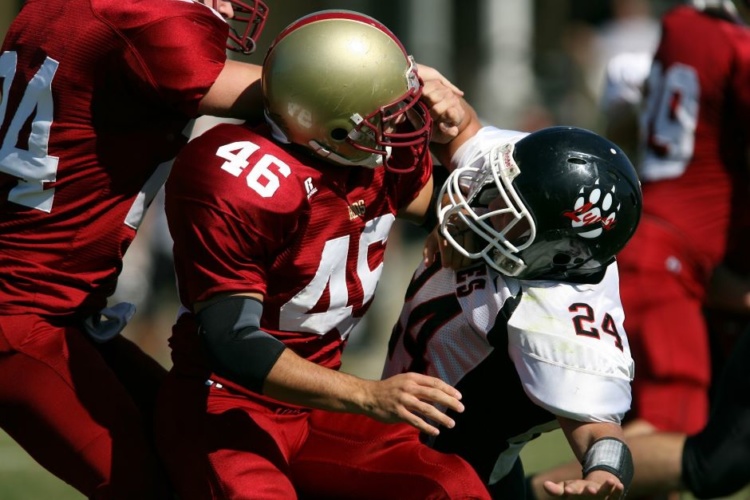
This is the claim of Michigan State University researcher Weiyi Lu, an MSU assistant professor of civil and environmental engineering whose liquid nanofoam is described in the Proceedings of the National Academy of Sciences.
Microlattice padding makes for safer helmets
When a helmet withstands an impact severe enough to cause a concussion to the player wearing it, the safety features of the helmet are compromised, rendering equipment unsafe for further use, Lu said.
The material developed by Lu and his team to reverse this is said to be full of tiny nanopores.
"The pore diameters are between two and 200nm and that creates a large amount of surface area," Lu said. "The whole area of MSU's Spartan Stadium could be folded up into one gram of nanofoam."
Ordinarily, the material is rigid and adding liquid would fill the holes. To fix this, Lu and his team coated the nanopores with a hydrophobic silicone layer made from an organic silyl chain that prevents liquid from being absorbed by the material. As a result, the liquid inside the nanofoam material becomes pressurised during an impact.
"When the pressure reaches the safety threshold, ions and water are forced into the nanopores making the material deformable for effective protection. In addition, the liquid-like material is pliable enough to form into any shape," he said. "Helmets are pretty much one shape but the liquid nanofoam material can be made to fit a person's specific head shape or profile."
In early laboratory tests, Lu and his team compared an eighth-inch liquid nanofoam liner against the three-quarter-inch piece of solid foam traditionally used in helmets. Both materials were struck with a 5kg mass at 3m/s. Even though both materials were deformed by the impact, the liquid nanofoam recovered between the continuous impacts of the test.
"The liquid nanofoam outperformed the solid foam," Lu said. "The nanofoam was able to mitigate continuous multiple impacts without damage; the results were identical from test one through test 10."
A liquid nanofoam liner would be thinner and less bulky inside a helmet. And since the liner can withstand multiple high-impact forces, the liner would not need to be replaced after a high-impact collision unless the helmet shell was damaged. "A helmet that can be safely reused is a huge advantage," he said. "We would love to see a liquid nanofoam liner in MSU football helmets in the future."
Lu envisions multiple future applications of the liquid nanofoam material beyond football and military helmets. The material could also be used in passive safety devices such as car air bags and bumpers.
The next stage of research will focus on more dynamic studies that will test faster and more intensive impacts, such as the effects of a bomb blast.




Nanogenerator consumes CO2 to generate electricity
Whoopee, they've solved how to keep a light on but not a lot else.